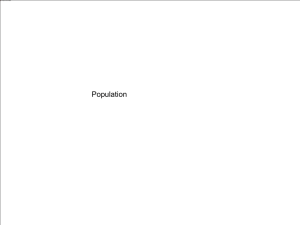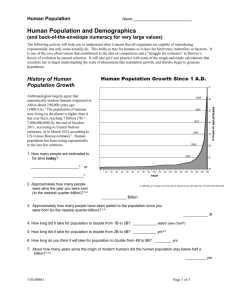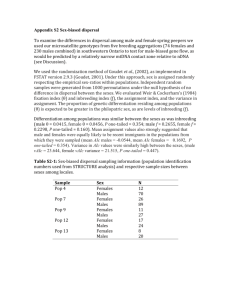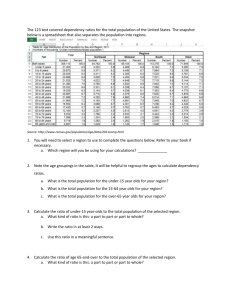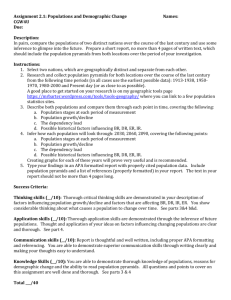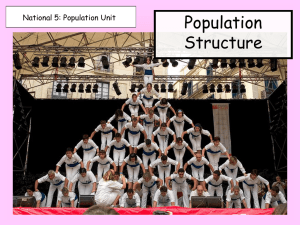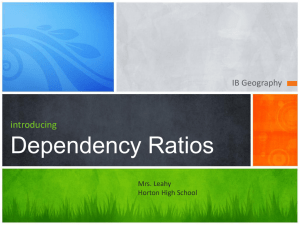File
advertisement
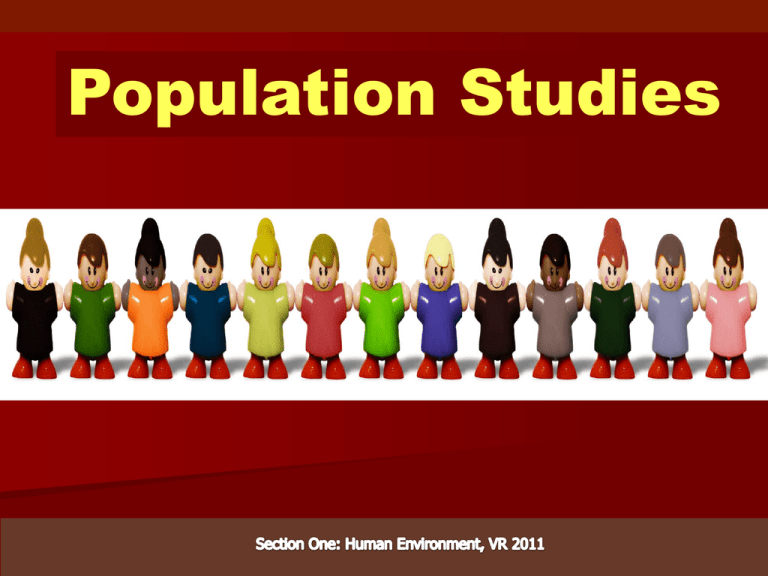
Population Studies Measuring Populations Terms, definitions and examples The first section of the elective deals with the study of Populations with two case studies to read in detail. Firstly there are some terms to be learned…………….. The study of populations The spread of people across the world The average number of people living in a square kilometre of land The study of populations The spread of people around the world The amount of people living in a square kilometre Number of live births per one thousand of the population Number of deaths per one thousand of the population….also known as the Mortality Rate Natural Increase: the difference between the birth and death rates – population rises Natural Decrease: the difference between the birth and death rates – population decreases Progressive: wide base, narrow top : Countries in stage 1 -3 of the DTM (Brazil). Stationary: all age groups represented fairly evenly (except a narrower top) : Countries in stage 4 of the DTM (Ireland). Regressive: narrow base and wider top showing a low birth rate and population living longer. Stage 5 of the DTM (France…. Or Ireland in the next 20 years!) 0 -14 years (total) + 65+++ years (total) ___________________________________ 15 – 64 years (total) The dependency ratio is calculated adding up all the under 15 year olds (males and females) and adding them to the total number of over 65 year olds (males and females). This total number of Youth Dependency + Old age dependency is divided by the total number of people between 15 to 64 year olds (males and females again!). This new number is multiplied by 100 over 1 The dependency ratio allows you to estimate the level of development of a place. The higher the number the deeper the troubles for the country. The ratio of 40:100 means that there are 40 dependents for every 100 workers. Ideally a country or a place needs a low number of dependents to ensure there is a higher number of eligible workers ….working and paying taxes to keep the state at a high level of development. 0 -14 years (total) + 65+++ years (total) ___________________________________ 15 – 64 years (total) • First settlers=arrived in Ireland approx 7,000 years ago • Pre-famine (1845-1848)=Pop estimated at 8 million, people lived in rural villages and depended on agriculture • After the famine=mass emigration, death and drop in population to approx 3 million • Early 20th century= Population continued to drop to 2.8 million but slowly rising since 1960s onwards • Today=recent census recorded just over 5 million in the Republic with this the third year of record ‘baby boom’ figures (20,000 in first four months of 2011) • 2015=with current trends figure may exceed 6 million • 2050= a slow down in figures is expected and the • Population may stabilize around 6.5million* Uneven population distribution 50% of the people in just 10% of the land Rural to urban migration Urbanisation increased from 1950’s onwards • 2007=77% in towns or cities • Paris basin densest populated area (21 million approx) • Mountainous areas least populated • • • • Practice short question skills (reading / calculating on graphs and charts. Read the case studies at the end of chapter one…..you might need or use some of the information in regional geography. Learn how to use the formulae and examples of areas with changing populations. Revise ------------------------ Revise ---------------------- and just a little more!!!
